|
November 21, 2023
Dear Friends and Neighbors,
Washington state supports over 1.1 million students in its public schools by providing funding to each school district based on enrollment. Education is Washington’s paramount duty according to our State Constitution. What constitutes “full funding” of basic education in Washington state has long been debated and eventually resulted in a major lawsuit, known as the McCleary case.
The Washington State Supreme Court issued its McCleary decision in 2012, which brought significant changes to Washington state school funding. The State Supreme Court recently issued a ruling on a case some legal observers referred to as “McCleary 2” brought about on behalf of Wahkiakum School District in southwest Washington. This case could have required the state to more generously fund school building improvements. Based on the court’s decision, school buildings will continue to be a shared cost between Washington state and local communities.
As the ranking Republican member on the Senate’s Early Learning and K-12 Education Committee, I work closely on statewide education issues, include school bond proposals. Prior to being elected to the Legislature, I served for nearly 10 years on the North Central Educational Service District and Eastmont School boards.
Supreme Court decision on school buildings
The Wahkiakum School District lawsuit argued that school districts with lower property values are at a disadvantage in gaining community support for the passage of school construction bonds and that the state is Constitutionally obligated to more fairly fund school facilities. In its opinion issued on September 7, 2023, the Washington State Supreme Court clarified that the state’s obligation to funding education does not entirely extend to funding school facilities.
In reference to education funding requirements in Article IX, Section 1 of the State Constitution, the “ample funding” Constitutional provision, “in the context of the Washington State Constitution as a whole and its development since the state’s founding shows that the constitution (1) treats school capital construction costs differently than it treats other education costs and (2) requires the state and local school districts to share the responsibility for those school capital construction costs” (Page 2). Click here to read the State Supreme Court’s Opinion.
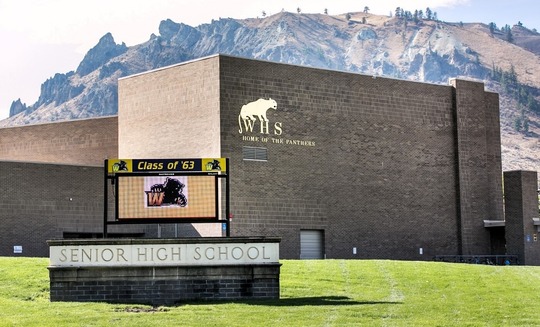 Wenatchee High School was first constructed in 1971. It serves 9th through 12th grade students in the Wenatchee School District. It has undergone a series of renovations and additions over the years. The district has proposed bonds in the past to make improvements to the high school as well as other schools throughout the district. It is in the process of evaluating its future capital improvement plans.
How are school facilities funded?
Public schools receive voter-approved local funding to supplement operating costs and school facilities. All local revenues are funded through property taxes of residents within the school district’s boundaries. School districts seek property tax “levies” to supplement their operating costs.
These day-to-day costs of operating a school district include staffing, utilities, supplies, food services, and transportation fuel. Local levies are short-term taxes, lasting up to four years, and require 50% voter support for approval. For school facilities and major renovations, schools seek voter approval for issuing bonds. School “bond” proposals are longer-term property tax impacts because they are paid back to investors over time with interest and could include a long-term payback schedule.
As such, there is a higher threshold of 60% voter support required for approval. For the school districts whose communities support school construction, the state provides matching revenues through its School Construction and Assistance Program. While both school levies (for learning) and school bonds (for buildings) include a community vote and a property tax for approval, the thresholds are different as school levy proposals require 50% approval and school bonds require 60% approval.
 This graph shows the property tax distribution in Chelan County. Each county’s distribution is different and based on the taxes collected and governmental jurisdictions within that county. School taxes represent the majority of our property tax bill. Approximately one-third of your property tax bill is the “state” portion, dedicated to school funding. The remaining amount for schools (25%) is the local portion, which represents the levies and bonds approved for your school district.
Schools receive local, state, and federal dollars
Many people have asked me about school funding. What is important to understand is that funding for school buildings and school operations are different. For school operations, districts receive state funding based on the total students enrolled in their districts, in accordance with assumed staffing levels. In addition to the state, school districts also receive operational funding from local and federal sources.
While state and federal funding is allocated in government budgets, local funding to school districts to supplement operations is provided by voters through community-approved property tax levies, requiring a 50% approval. For school facilities, school districts must gain a community’s 60% approval for their construction bond passage. Those school district that achieve this threshold can apply for state matching dollars for new and renovated buildings. This state match is provided through the capital budget’s School Construction and Assistance Program previously mentioned.
An easy way to remember the difference between the two tax proposals is, “levies are for learning and bonds are for buildings.” While I am a strong supporter of education and acknowledge our state paramount duty, I am concerned about growing property tax burdens on residents from both school levies and school bonds.
 In 2015, voters of the Cascade School District in Leavenworth approved a $69.5 million bond. The funding built a new Alpine Lakes Elementary, renovated Peshastin-Dryden Elementary, and expanded and upgraded Cascade High School. Shown above is the renovated Cascade High School, completed in 2019.
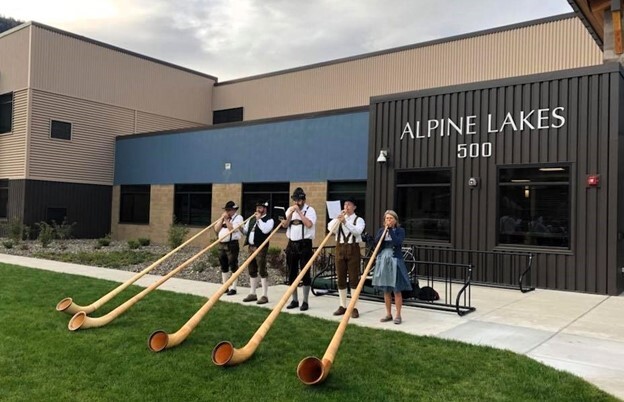 Alpenhorns helped dedicate Cascade School District’s Alpine Lakes Elementary in September 2018. The new school cost approximately $21 million and was a key facility in the district’s $69.5 million bond measure. Cascade School District and Eastmont School District are among just a few school districts in the area that have successfully passed recent school bonds.
Proposals to reduce voter approval for bonds
In recent years, some school advocates have sought to reduce the existing 60% approval threshold for school construction bonds to a 50% simple majority. In 2007, before my service began in the Legislature, the state reduced school levy approval from 60% to 50% where it still stands today. The effort to do the same for school construction bonds has been active for at least the past few years. In order to make this change, since it would involve altering a provision in the State Constitution, both the House and Senate would need to approve the legislation by a two-thirds vote and then the measure must receive a statewide voter approval of at least 50%.
During my service in the Senate a few years ago, the simple majority school bond measure came to the Senate floor but failed to garner the approval required to pass the Senate and move to the House of Representatives. There were two bills in 2021 related to this issue. Senate Bill 5386 would lower the threshold for school bond votes from 60% to 55%, and House Bill 1226 would lower the threshold from 60% to 50. In 2019, Senate Joint Resolution 8201 was advanced to the Senate floor for a vote but failed with only 28 “yes” votes. This resolution – seeking to adjust the State Constitution related to school district indebtedness – was five votes short of the required 33 vote two-thirds approval.
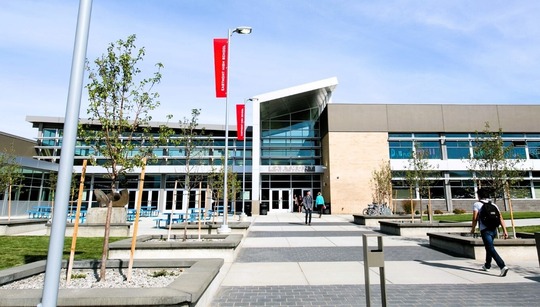 Eastmont High School was first constructed in 1979. It serves 10th through 12th grade students in the Eastmont School District and has received renovations and additions over the years. Most recently, significant renovations were completed to Eastmont High in 2014 following a community bond passage in 2010. Following a recent school bond defeat at 51.3% (60% required), Eastmont School District is planning a modified school renovation request of $117 million in a February special election, primarily for improvements at four elementary schools.
Reasons “For” and “Against” lowering threshold
For: Supporters of the measures argue that a simple majority vote is sufficient to put elected officials in office for local, state, and federal positions as well as to establish laws by citizen initiatives. They say those same standards should apply to community votes on school constructions bonds. They do not want different standards for school district levies and bonds. They say school districts often gain a majority of voters in support of school construction proposals, but those votes fail because they did not achieve the 60% voter-approval threshold for bonds.
Some school districts have proposed their school bond proposals to voters multiple times and are repeatedly unsuccessful. School advocates also argue that school buildings are key to any community and help provide students services critically important to their future. School advocates also add that almost all school district requests to voters are reasonable and school buildings across the state are in dire need of replacement or renovation.
Against: As your state senator, I support a simple majority threshold for school levy proposals, but I do not support a simple majority for school bond approvals. School levies have short-term tax impacts for communities and are subject to reauthorization whereas bonds have long-term tax impacts, upwards of 25 years. These votes can significantly alter the property taxes in a community for many years and, as such, warrant some sort of higher threshold. School bonds are difficult to pass at 60%, but it is achievable if the requests are reasonable and communications are good.
During my school board service at Eastmont School District in 2010, we passed a bond to remodel Eastmont High School, Sterling Middle School, and Grant Elementary – along with other capital improvements – with 60% approval, on the first try, during a recession, and on a general election ballot. Yes, school facilities are very important, but property taxpayers deserve reasonable protections and realistic school district requests.
Other Programs: Rather than lowering the voting threshold to approve school bonds, the state could look to enhance funding to the existing Small School District Modernization Program. This would be a helpful way to facilitate building improvements to school districts without increasing homeowner property taxes. This program and other options will likely be considered during the 2024 session.
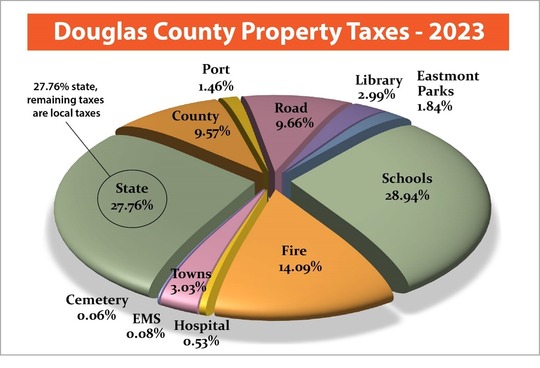 Similar to Chelan County, school taxes in Douglas County represent over half of the property tax bill. The “state” portion of the property tax is approximately 28% and is dedicated to entirely to school funding. The remaining “schools” portion is locally determined and includes both levies and bonds.
Role of local school boards
The important role of school districts is often overshadowed since so much focus is directed at the state meeting education funding needs, whether for school operations or facility needs, especially when it comes to property tax votes. Washington state has 295 school districts. Those districts are local governments entities, not state agencies. They are governed by their own elected boards and administered by school superintendents.
School districts collect revenues, develop local priorities, and administer their budgets. They should prudently invest taxpayer dollars (local, state, and federal) to implement programs, negotiate sustainable contracts with employees, manage operations, and plan upkeep on their facilities.
The school boards develop local priorities, approve budgets, oversee operations, and manage facilities for their districts. Despite increasing requirements from the state, school boards still have significant authority within their districts. Local school boards first decide the property tax measures – both for school levies and school bonds – that voters are asked to consider. As a former school board president, I greatly appreciated anyone who steps up to serve on their local school board. It is a difficult job with year-round responsibilities and public expectations.
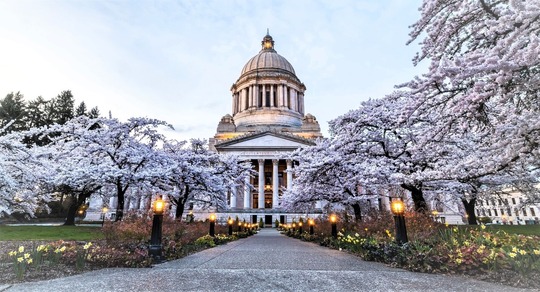 Financing options for school building will continue to be a topic of discussion at the State Capitol. The Small School District Modernization Grant Program may be expanded to help smaller school districts better meet their school facility needs. Based on the recent state Supreme Court decision, financing school facilities will continue to be a shared responsibility between the state and local communities.
Thank you for the opportunity to serve you
Hopefully this information is helpful in understanding the recent State Supreme Court decision regarding financing school facilities. If you have any questions about this topic or other issues, please contact me at senatorbradhawkins.org. You can also contact our Legislative Hotline at 1-800-562-6000 if you need immediate assistance at any time. Also, my office is actively working over the coming months to reach out to you about my Facebook page. You can like and follow me on Facebook @SenatorBradHawkins for my latest updates.
Thank you for the opportunity to serve as your state senator.
Sincerely,
 Brad Hawkins
State Senator Brad Hawkins
12th Legislative District
Website: senatorbradhawkins.org
P.O. Box 40412 | Olympia, WA 98504-0412
(360) 786-7622 or Toll-free: (800) 562-6000
|